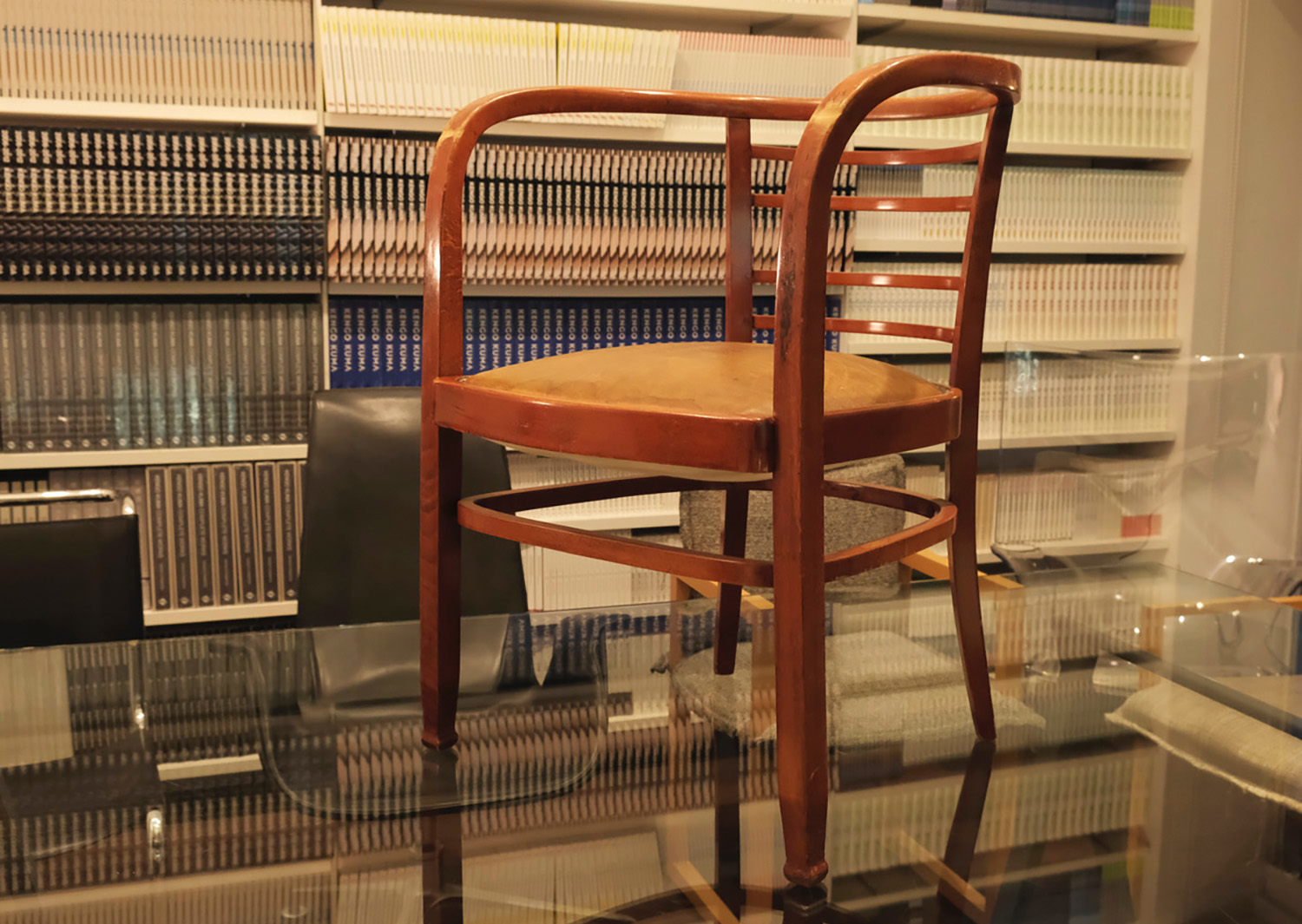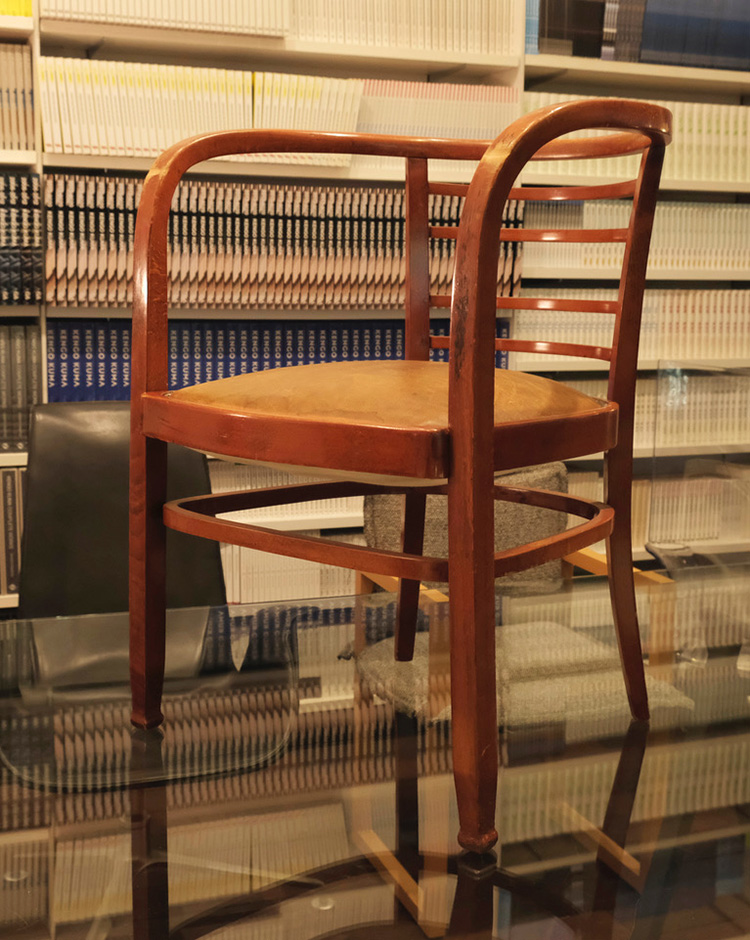

~地球の声に耳を傾ける~エコピープル


新型コロナの地球規模の感染拡大で、一年遅れの開催となった『東京オリンピック・パラリンピック』。こうした異常な状況下で、世界最大のスポーツの祭典が前代未聞の無観客での開催になることも予想しながら、そのメイン会場である国立競技場の設計・建築に参画された隈研吾さん。五色のシートがランダムに配置されたスタンドに、観客が不在であるにもかかわらず、やわらかで温かな印象を覚えた方は多いのではないでしょうか?
オリンピックに先立って開催されたのは、そんな隈さんのやわらかさを感じる視点で、ご自身の作品、建築哲学、未来の都市空間へのビジョンを展示した『隈研吾展 新しい公共性を作るためのネコの5原則』(高知県立美術館、長崎県美術館 、東京国立近代美術館)。
展覧会では、「人、あるいはネコ」が集まる場所を作るための主要な原則として、「孔(あな)」「粒子」「やわらかい」「斜め」「時間」の5つを掲げ、コンクリート空間から自然を感じ、自然と共生する都市空間へ回帰するためのヒントが随所に埋め込まれ、「新しい公共性」の姿を軽やかに提唱されました。
この発想の起点となったのがご本人が好きだというネコの視点。つまり、ネコが、そして私たち人間が普通に持っている身体感覚を大切にした建築でした。週末の仕事場に伺い、大きな仕事を終えた隈研吾さんに『新しい公共性』について伺いました。
「緊急事態宣言の中、箱を出て、歩き始めた。
歩いてみると、街が全く違うものに見えてきたのである。
ハコの外に、こんなにも大きな可能性があり、多くのコト(情報)があることに、今まで気がつかなかったことに驚いた。
その僕の歩いた場所、歩くことができた場所が公共空間である。」
*隈研吾『ネコに学び、ハコを出よう』
『隈研吾 新しい公共性をつくるためのネコの5原則』東京国立近代美術館
取材日|2021年10月23日
場所|東京・南青山
取材・テキスト|太田 菜穂子 Naoko OHTA
写真|広川 泰士 Taishi HIROKAWA



 隈研吾さん
隈研吾さん
隈研吾 Kengo KUMA
1954年生。1990年、隈研吾建築都市設計事務所設立。慶應義塾大学教授、東京大学教授を経て、現在、東京大学特別教授・名誉教授。30を超える国々でプロジェクトが進行中。自然と技術と人間の新しい関係を切り開く建築を提案。主な著書に『点・線・面』(岩波書店)、『ひとの住処』(新潮新書)、『負ける建築』(岩波書店)、『自然な建築』、『小さな建築』(岩波新書)、他多数。
https://kkaa.co.jp
主な受賞歴|
The Tokyo Olympics and Paralympics, held one year late due to the global pandemic. In these unusual circumstances, Kengo Kuma participated in the design and construction of the National Stadium, the main venue of the Olympic events, with the expectation that the world’s largest sporting event would take place with an unprecedented number of spectators. I think many people felt that the haphazardly placed 5-coloured seats gave a gentle, warm impression, even with the absence of an audience.
Mr. Kuma’s gentle perspective could be felt through “A Plan for Tokyo, 2020: Five Purr-fect Points for Feline Architecture”, an exhibition of his work, architectural philosophy and vision for the future of Urban Space, held prior to the Olympics (Kochi Prefectural Museum of Art, Nagasaki Prefectural Museum of Art, National Museum of Modern Art, Tokyo).
In the exhibition, creating a place where ‘People or cats’ gather, the ‘five principles’ are ‘hole’, ‘particles’, ‘oblique’, ‘softness’, and ‘time’. Feeling nature from concrete spaces, and hints for return to urban spaces that coexist with nature, were embedded everywhere, and his vision for ‘New Public Space’ was lightly advocated.
The starting point for this idea was Kengo Kuma’s interest in the cat’s point of view. In other words, architecture that cherishes the physical sensations that we humans and cats normally have. After finishing a big project, I visited his workplace over the weekend to ask Kengo Kuma about these ‘New Public Spaces’.
“During the state of emergency, I left my box and started walking.
When I walked around, the city looked completely different. Outside the box, I was surprised that I hadn’t noticed how much potential there was, how much (information) was out there.
The places I walked around, where I could walk, were public spaces.”
* Kengo Kuma, “Let’s learn from cats and get out of the box”
“A Plan for Tokyo, 2020: Five Purr-fect Points for Feline Architecture”, National Museum of Modern Art, Tokyo
Date of Interview: 23rd October 2021
Interview Location: Minami-Aoyama, Tokyo
Interview/Text: Naoko OHTA
Photos: Taishi HIROKAWA



 Kengo KUMA
Kengo KUMA
Kengo KUMA
Born in 1954. Established Kengo Kuma & Associated in 1990. Having worked as a professor at Keio University and a professor at the University of Tokyo, he is currently a professor emeritus at the University of Tokyo. He has projects underway in more than 30 countries. His architectural designs open up new relationships between nature, technology and humans. Major books include Ten Sen Men (‘Point, Line, Plane’, Iwanami Shoten), Hito-no-Sumika (‘Shelters for People’, Shincho Sinsho), Architecture of Defeat (Iwanami Shoten), Small Architecture/ Natural Architecture (Iwanami Shoten).
https://kkaa.co.jp
Major Awards: